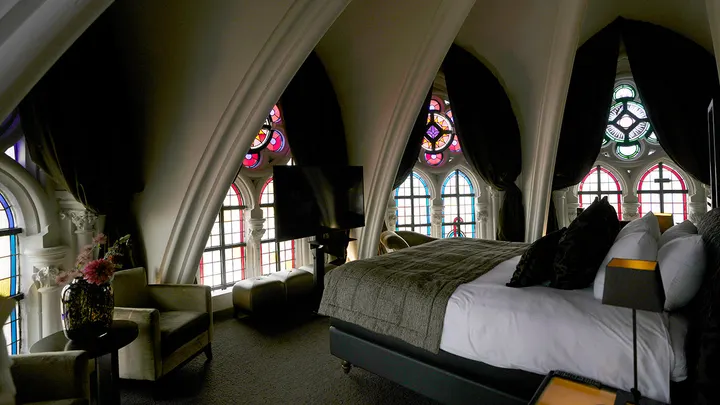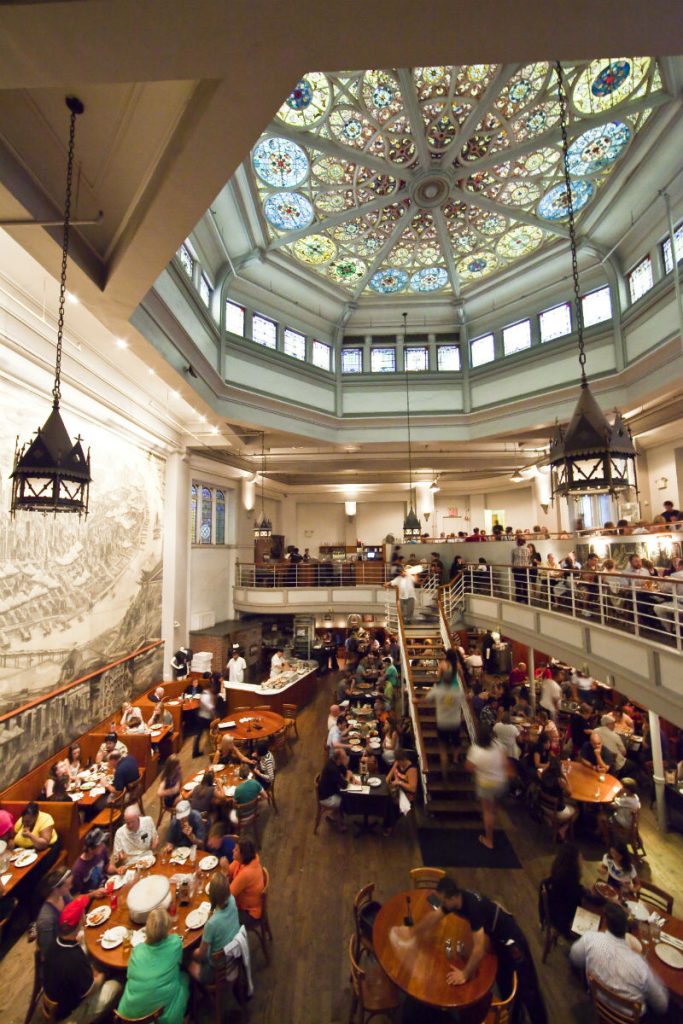Mechelen, Belgium – In a reflection of changing religious landscapes, numerous churches, convents, beguinages, and chapels across Europe are standing empty, as faith and church attendance continue to dwindle over the past half-century. Many of these religious structures are now being repurposed to ensure the preservation of their historical and architectural significance, while others have been transformed into venues for non-religious activities, expanding their utilization.
One striking example of repurposing is the Martin’s Patershof hotel in Mechelen. This unique hotel was created by renovating the interior of a church, fashioning rooms that boast beds with headboards resembling organ pipes, and locating a breakfast area adjacent to the former altar. Emilie De Preter, the hotel manager, shared with The Associated Press, “We often hear that people come here to relax and enjoy the silence of its former identity.”

Although some may question the ethical implications of repurposing churches in such a manner, the emphasis remains on the preservation of architectural value. “In the hotel, people sleep in a church, maybe have sex in a church. So you could say: ethically, is it a good idea to have a hotel in a church? I don’t have so many hesitations,” stated a hotel representative. The primary concern is focused on ensuring the retention of the building’s historical and cultural worth.
Meanwhile, in Brussels, the St. Anthony of Padua church has been transformed into the Maniak Padoue climbing club, where various remnants of the original church are still on display. The unique combination of retaining the old remains alongside the adventurous spirit of climbing has created an intriguing juxtaposition. “The stained-glass brings a real shimmering and warm light to the venue when the sun goes through it, so we can really feel the presence of the remains of the church,” remarked Kyril Wittouck, the club’s co-founder. “The altar is still in place, so we are surrounded by remains, and it reminds us where we actually are.”

Another example in Brussels is the Spirito nightclub, once an Anglican church. The club’s logo features a priest kissing a nun, signaling the transformation that has taken place within its walls. While these repurposed venues offer unique experiences to patrons, not everyone is pleased with the treatment of old churches.
Some individuals argue that these spaces should remain sacred and reserved for contemplation. However, proponents of repurposing contend that the long arc of history demonstrates the potential for faith to experience a rebirth in Europe. According to Bonny, a church representative, “Every 300 years we nearly had to start again. Something new, I’m sure, will happen. But it takes time.”

Despite the concerns raised by those who advocate for the traditional usage of churches, the ongoing repurposing trend aims to safeguard the historical and architectural significance of these structures while adapting to the changing times. As faith and church attendance continue to decline, repurposing offers an alternative approach to ensure the preservation of Europe’s rich religious heritage. The transformation of these churches into hotels, climbing clubs, and nightclubs creates a dialogue between the past and the present, allowing visitors to appreciate the architectural grandeur while exploring new and vibrant experiences.
As Europe evolves, so too do its churches. While some may lament the departure from traditional usage, these repurposed spaces stand as testaments to the resilience of history and the potential for reinvention.

